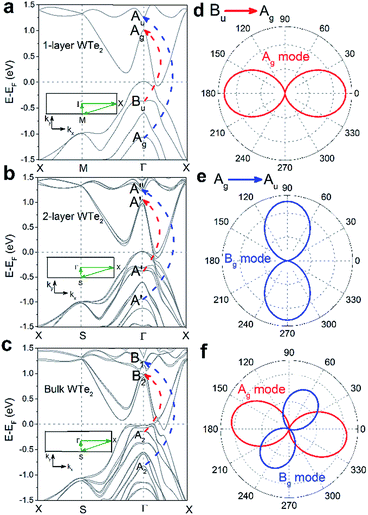 Open Access Article
Open Access ArticleCreative Commons Attribution 3.0 Unported Licence
Correction: The polarization-dependent anisotropic Raman response of few-layer and bulk WTe2 under different excitation wavelengths
Qingjun Songab,
Haifeng Wangcd,
Xiaolong Xuab,
Xingchen Pancd,
Yilun Wangab,
Fengqi Songcd,
Xiangang Wan*cd and
Lun Dai*ab
aState Key Lab for Mesoscopic Physics, School of Physics, Peking University, Beijing 100871, China. E-mail: lundai@pku.edu.cn
bCollaborative Innovation Center of Quantum Matter, Beijing 100871, China
cNational Laboratory of Solid State Microstructures, College of Physics, Nanjing University, Nanjing 210093, China. E-mail: xgwan@nju.edu.cn
dCollaborative Innovation Center of Advanced Microstructures, Nanjing University, Nanjing 210093, China
First published on 8th February 2017
Abstract
Correction for ‘The polarization-dependent anisotropic Raman response of few-layer and bulk WTe2 under different excitation wavelengths’ by Qingjun Song et al., RSC Adv., 2016, 6, 103830–103837.
In part (d) of Fig. 4 of the original manuscript, and in the description of part (d) in the Fig. 4 caption, the wrong labels were given for the modes. The labels “Bg” and “Au” should be “Bu” and “Ag”, respectively. The corrected Fig. 4 and its caption are shown below:
Additionally, in the Results and Discussion section, in the text below Fig. 4, two sentences should be revised as follows:
“For Elas ≈ 2.3 eV, the excited electron will transit from the Ag valence band to Au conductance band, and the corresponding polar plot is shown in Fig. 4(e), where the maximum (minimum) absorption corresponds to the perpendicular (parallel) relation between the incident polarization and a-axis”.
“To study the influence of electron–photon interaction on the anisotropic Raman scattering, we first assume the electron–phonon interaction (He–ph) in the Raman scattering is not polarization dependent”.
The Royal Society of Chemistry apologises for these errors and any consequent inconvenience to authors and readers.
| This journal is © The Royal Society of Chemistry 2017 |

